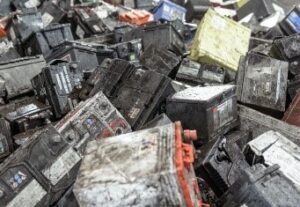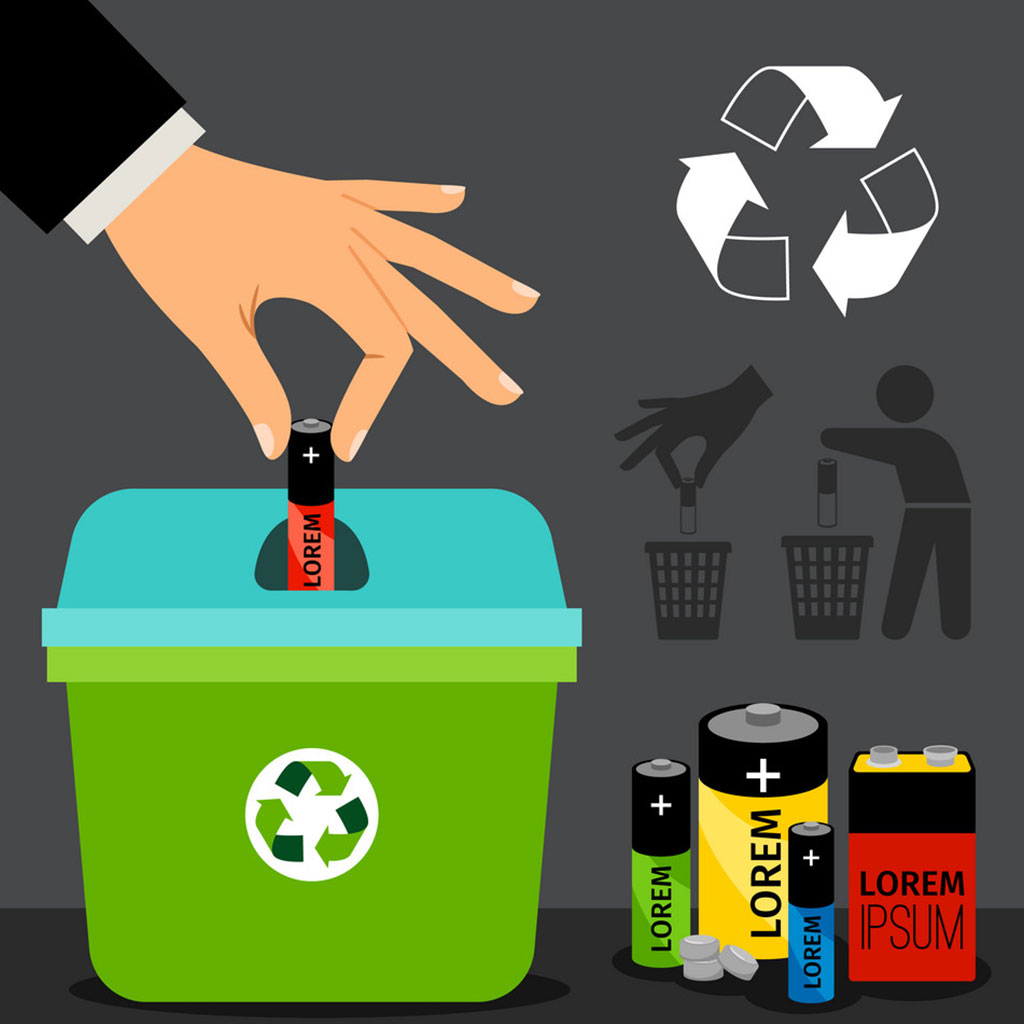Introduction
Today, there is hardly anyone in the world who has not heard the name of recycling or has not seen the recycling symbol on different products. The word recycling and its importance have become an obvious part of people’s lives for some time, and except for a few people who still do not consider it fully operational, the rest of the people are always trying to separate their waste as much as possible or send it to recycling centers.
Glass, plastic, paper, etc. are among the materials that are being widely consumed and their recycling is very important, but next to these items, one of the most important wastes that need to be recycled are batteries.There are different types of batteries, the chemical structure and the materials inside them are definitely different, and the same difference in the raw materials used in the structure makes the level of damage to the environment also different. For example, nickel-cadmium batteries, which are no longer produced today, have been very harmful to the environment due to the heavy metal cadmium. But it is worth mentioning that recycling all types of batteries, regardless of their internal structure, is a much better method than burying batteries.
Recycling of batteries
In addition to being among the most dangerous types of waste, batteries are considered valuable resources due to their internal structure, so their recycling is logically economical in addition to environmental reasons.
The lithium contained in the lithium-ion and lithium-polymer batteries that make up the batteries of our mobile phones, tablets and personal computers can lead to water pollution and have destructive effects on the environment.It should be noted that each type of battery has its own recycling method.In the following, we discuss the methods of recycling all types of batteries:
1- Zinc Carbon batteries and alkaline batteries:
Both of these types of batteries, which are considered primary batteries, are widely used in Iran, and the AA and AAA types are used in home use, including watches, toys, TV control and… are used a lot. This type of battery does not have a long life, so there is a lot of waste left by these batteries.These batteries are recycled in a specialized “room temperature,” mechanical separation process. The result of this process is the separation of components into three groups.
These items are:
a) Zinc & Manganese Concentrate, b) Steel, c) Paper and Plastic. All of these products are put back into the market place for reuse in new products. These batteries are nearly 100% recycled.
The following table is the approximate percentages of recycled materials.
| Other | Water | C | Alkali | Plastic | Paper | Other Metals | Pb | Zn | Ni | Mn | Fe | |
| 15.2 | 12.3 | 9.2 | 6 | 4 | 0.7 | 0.8 | 0.1 | 19.4 | 15 | 16.8 | ZnC | |
| 14 | 10.1 | 3.7 | 5.4 | 2.2 | 1 | 1.3 | 14.9 | 0.5 | 22.3 | 24.8 | Alkaline |
2- Lithium-ion batteries
Today, lithium-ion batteries are widely used in phones and laptops, and this means that every year a large number of this type of battery is produced and consumed. Therefore, a large number of these batteries also turn into waste and recycling cycle of these types of batteries helps the environment.Lithium-ion batteries contain high-grade lithium, copper, and aluminum. Depending on the active materials used inside, they may also contain cobalt, nickel and rare earth metals. Lithium battery recycling processes are essential to prevent cobalt, nickel, and lithium shortages in the future and to create a sustainable life cycle for these technologies.
These processes not only recover cobalt, nickel, copper, and aluminum from spent battery cells, but also a significant portion of lithium. Other potentially valuable and recyclable materials are graphite and manganese. Today, recycling processes recover approximately 25 to 96 percent of the material in a lithium-ion battery cell.
These batteries are recycled in a specialized “room temperature, oxygen-free,” mechanical process. The ultimate result of this special process is the separation of materials in three groups of items.
These items are a) Cobalt & Lithium Salt Concentrate, b) Stainless Steel, c) Copper, Aluminum and plastic. All of these products are then put back on the market to be reused in new products. These batteries are nearly 100% recycled.
3-Nickel cadmium and Nickel metal hydride batteries:
Nickel-cadmium batteries are one of the types of batteries that are banned in many countries because the cadmium contained in them is one of the heavy metals and brings many environmental risks. For this reason, nickel cadmium batteries have been replaced by nickel metal hydride batteries. The Nickel in these types of batteries is valuable, and recycling these types of batteries returns an important natural resource to nature.Separating the plastic components from the metal ones is the first step toward the recycling process of these batteries. After that the smelting begins.The metals are then recycled via a High-Temperature Metal Reclamation (HTMR) process during which all of the high temperature metals contained within the battery feedstock (i.e. nickel, iron, manganese, and chromium) report to the molten-metal bath within the furnace, amalgamate, then solidify during the casting operation. The low-melt metals (i.e. zinc and cadmium) separate during the melting. The metals and plastic are then returned to be reused in new products. These batteries are nearly 100% recycled.
4– Lead acid batterie
s:Lead acid batteries are mostly used in car batteries and UPS. Acid is used in the structure of these batteries, so first step of the recycling process is essentially neutralizing the acid inside these batteries.
In the next step, the polymer is separated from the lead. The materials obtained from recycling can be reused in other applications or even to make new batteries. The lead in the lead-acid battery can be recycled. Lead is a toxic element and should therefore be kept out of the waste stream.







No Comments